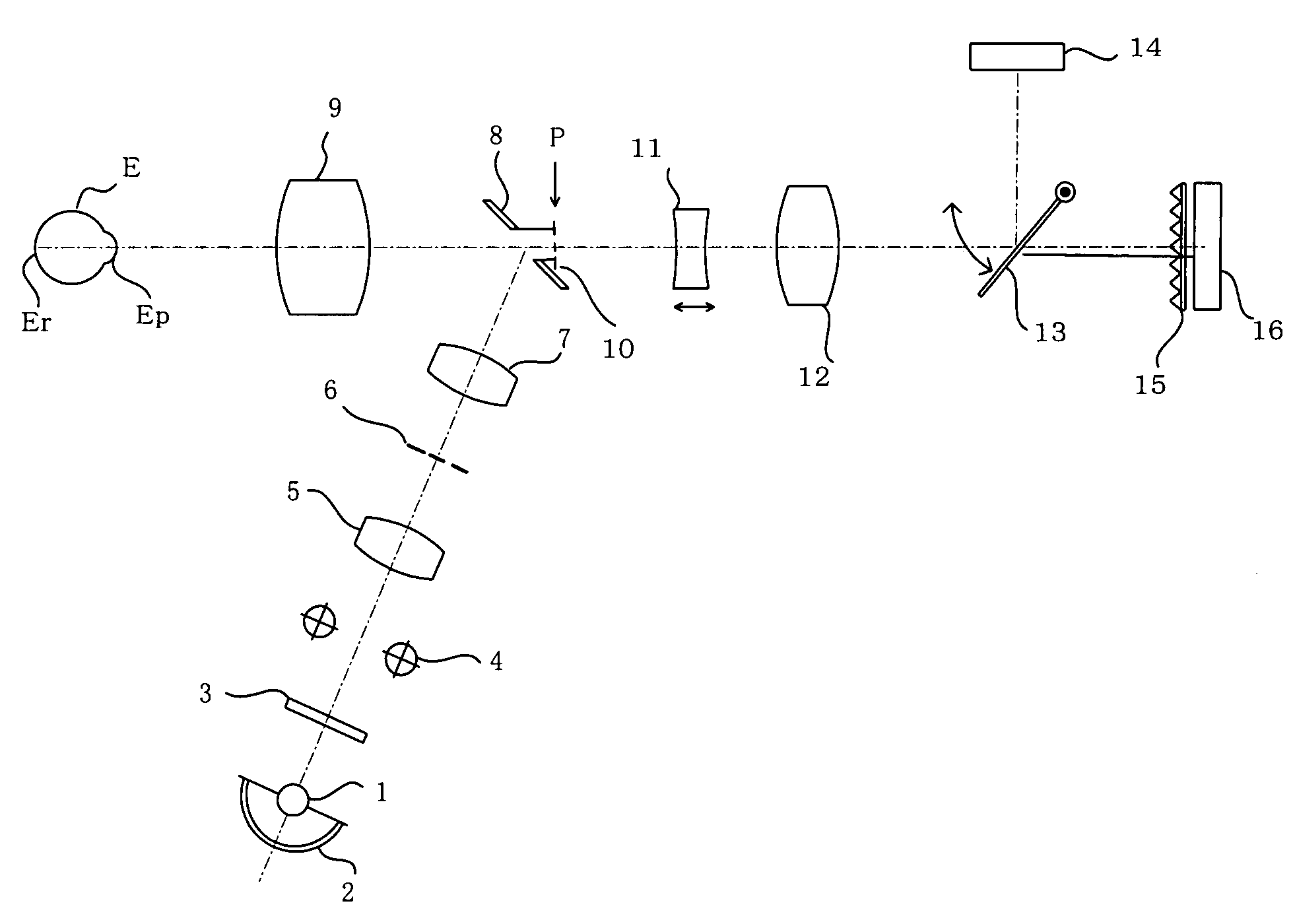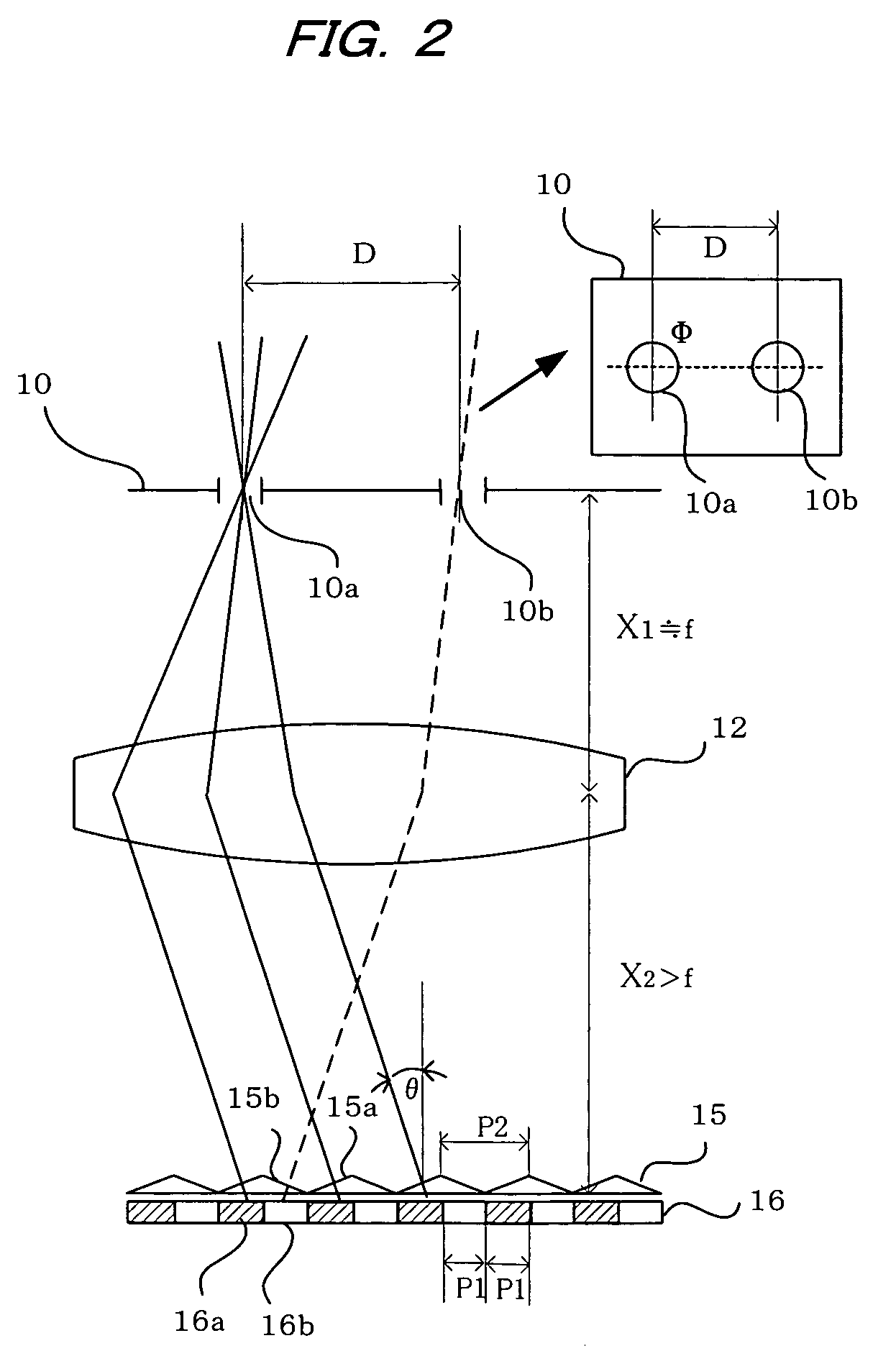Ophthalmic photography apparatus
a technology of ophthalmic photography and camera, which is applied in the field of ophthalmic photography apparatus, can solve the problems of large apparatus, increased cost, and inability to obtain good stereoscopic view, and achieve the effect of good image of the fundus for stereoscopic viewing
- Summary
- Abstract
- Description
- Claims
- Application Information
AI Technical Summary
Benefits of technology
Problems solved by technology
Method used
Image
Examples
Embodiment Construction
[0037]The present invention is adapted for use in an ophthalmic photography apparatus able to take photographs for use in stereoscopic viewing. With reference to the following drawings, embodiments of the ophthalmic photography apparatus according to the present invention will now be described in detail based on a fundus camera.
[0038]FIG. 1 illustrates a first embodiment of the present invention. The illustrated fundus camera comprises an illumination optical system that illuminates the fundus Er of an eye being examined E and a photographic optical system that photographs the eye fundus thus illuminated. In the illumination optical system, light emitted from a halogen lamp or other light source 1 and light reflected from a concave mirror 2 are passed through a visible-light-blocking and infrared-light passing filter 3 and the resulting infrared light is passed through a strobe 4 and a condenser lens 5 to illuminate a ring slit 6 disposed at a position conjugate to the anterior ocul...
PUM
 Login to View More
Login to View More Abstract
Description
Claims
Application Information
 Login to View More
Login to View More - R&D
- Intellectual Property
- Life Sciences
- Materials
- Tech Scout
- Unparalleled Data Quality
- Higher Quality Content
- 60% Fewer Hallucinations
Browse by: Latest US Patents, China's latest patents, Technical Efficacy Thesaurus, Application Domain, Technology Topic, Popular Technical Reports.
© 2025 PatSnap. All rights reserved.Legal|Privacy policy|Modern Slavery Act Transparency Statement|Sitemap|About US| Contact US: help@patsnap.com



